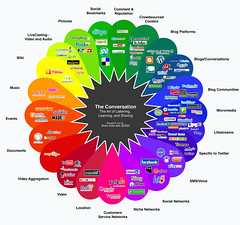From 9am today, three of RBI's Community Editors (with a little prodding from me) are live chogging (that's part-chat, part-blogging) their day here.
We would love you to take part by asking questions or offering comments and advice - no registration or login needed.
Why are we doing this?
Lots of reasons:
- To show people inside and outside our business what an RBI Community Editor does (this is a relatively new role for a traditional publisher). Who knows - someone might even be inspired to apply for a job here.
- To get input and feedback on our community management activities.
- To test-drive the CoverItLive live blogging software.
- If all else fails, to have a bit of fun.
Who are we? Simeon BrodyCommunity Editor, Community Care's CareSpace
Simeon BrodyCommunity Editor, Community Care's CareSpace
I became Community Care's community editor in July 2008 after several years working in news.
My main job is to look after CareSpace, the community bit of the website, getting involved in discussion, promoting it in the magazine and fighting off the odd anti social work troll.
Currently popular topics on the forum include child protection, care of older people and
The Apprentice.
I'm also responsible for Community Care's internal and external blogs, letters, e-newsletters and audio and video content.
In my own time I enjoy making
short comedy videos and wearing a false moustache. My favourite cake is a Bakewell Tart, closely followed by a Battenburg.
 Stuart ClarkeCommunity Editor, AirSpace.aero
Stuart ClarkeCommunity Editor, AirSpace.aeroI moved to Flightglobal.com in June 2007 after an unfortunate sea bass incident meant that I couldn’t achieve my dream of becoming the next Ultimate Frisbee champion of the North of England.
My role is to manage the AirSpace community section of the Flight Global website – which includes forums, blogs and photos (an extremely popular section of our site) , plus I manage our 11 industry blogs (with more in the pipeline) and other community and multimedia content, such as video, social networking and social bookmarking.
I have been Community Editor for Flightglobal.com for a year now and have enjoyed the challenges of both learning a new industry and creating a sustainable online community. Each community is never the same, having its own drivers and quirks and qualities, so it has definitely required constant hard work and dedication to keep the momentum going. It has been exciting experience though, with plenty of new lessons learnt along the way!
In our first year we have achieved over 1,400 new users, which isn’t bad, but we see the potential that the site has and know that there is still a long way to go!
 Isabel DaviesCommunity Editor, FWi
Isabel DaviesCommunity Editor, FWiI moved to the job of Farmers Weekly’s community editor in July 2008 after eight years working on the title’s news desk.
My role is to manage the FWiSpace community area of the website – which includes forums, blogs and photos – along with editing the community section of FW magazine. This section can consist of up to four pages of letters per week and contributions from regular columnists.
Contrary to popular opinion, many farmers are online as they are happy to adopt new technologies - tractors are expensive, sophisticated machines – the job isn’t all chewing straw :-) .
Agriculture can also be an isolated profession, so the 3,200 registered users of FWiSpace find it a useful way to seek advice or just let off some steam. Photographs – particularly of large machines – are also popular.
I like to regard myself as part of the online community and not just the admin. I’m a farmer’s daughter so I enjoy and understand the subject matter and like to take part in conversations. Members are slightly perplexed by the fact that our offices are based in Sutton rather than a converted barn in Devon, but they seem to appreciate the glimpse of London-life that I offer them. I try not to mention that I am frightened of cows.
 Andrew RogersHead of User Content development, RBI
Andrew RogersHead of User Content development, RBII'm a bit of an interloper on here as I'm not actually a Community Editor.
My rather grand job title disguises the humble objective of encouraging our magazines and websites to create online spaces where their communities (what we used to call "readerships") can congregate and interact, share, blog or do whatever they want to do (within reason) with each other.
I've been working with the wonderful characters above to help our erstwhile somewhat traditional publishing company to gain understanding and confidence in what is generally called social media.
But really, of course, this is all about people - helping them communicate, share and even make friends. For a company whose traditional publishing activity is posting our readers a magazine every week or month, that's quite a culture change.
We are all learning every day. It sounds trite, but it really is very exciting to be working in this industry at the moment. Exciting and just a wee bit scary.
Before this role I was web manager for
PersonnelToday.com and before that a freelance writer and editor.





 PersonnelToday.com
PersonnelToday.com












